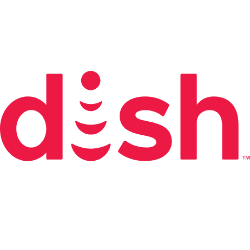CABO

Cable One, Inc.
CABO
(2.0)377,65 USD
7.51% ROA
13.31% ROE
7.11x PER
1.775.969.585,00 USD
180.55% DER
3.73% Yield
15.87% NPM
Cable One, Inc. Stock Analysis
Cable One, Inc. Fundamental Analysis
Fundamental analysis in stock investing is like studying the foundation of a house before buying it. It involves looking at a company's financial health, like its earnings, assets, and debts, to determine if it's a good investment based on its fundamental strength and potential for growth.
| # | Analysis | Rating |
|---|---|---|
| 1 |
Dividend Growth
The company has demonstrated exceptional dividend growth over the past five years, consistently increasing payouts to shareholders year after year. |
|
| 2 |
Dividend
Investors can trust the company's impressive dividend track record, consistently distributing dividends over the past five years, showcasing a strong commitment to rewarding shareholders. |
|
| 3 |
ROE
The stock's ROE falls within an average range (5.01%), demonstrating satisfactory profitability and efficiency in utilizing shareholders' equity. |
|
| 4 |
ROA
The stock's ROA (2.63%) shows that it's doing a pretty good job at making money from its assets, making it a solid choice to invest and earn steady profits. |
|
| 5 |
PBV
The stock's PBV ratio (1.73x) indicates a justifiable valuation, presenting a compelling choice for investors seeking reasonable returns. |
|
| 6 |
Buffet Intrinsic Value
Warren Buffett's formula suggests that the company's stock is undervalued (10.898), making it an appealing investment prospect with its intrinsic value surpassing the current market price. |
|
| 7 |
DER
The company has a high debt to equity ratio (205%), which means it owes a lot of money compared to what it actually owns, making it financially risky. |
|
| 8 |
Revenue Growth
Company's revenue has remained stagnant over the past three years, indicating a lack of growth and making it a less favorable option. |
|
| 9 |
Net Profit Growth
This company's net profit has remained stagnant over the past five years, indicating a lack of growth and making it a less favorable investment option. |
|
| 10 |
Assets Growth
Company's revenue has stayed stagnant, showing no signs of improvement and making it a less favorable choice. |
|
| 11 |
Graham Number
The Graham number of this company suggests that its stock price may be overvalued, indicating a less favorable investment opportunity. |
Cable One, Inc. Technical Analysis
Technical analysis in stock investing is like reading the patterns on a weather map to predict future weather conditions. It involves studying past stock price movements and trading volumes to make predictions about where a stock's price might go next, without necessarily looking at the company's financial health.
| # | Analysis | Recommendation |
|---|---|---|
| 1 | Awesome Oscillator | Hold |
| 2 | MACD | Buy |
| 3 | RSI | Hold |
| 4 | Stoch RSI | Sell |
Cable One, Inc. Price Chart
Financial Statements
Financial statements are like report cards for companies. They show how much money a company makes (income statement), what it owns and owes (balance sheet), and where it spends its money (cash flow statement), helping stock investors understand if a company is healthy and worth investing in.
Income Statements
An income statement for a company is like a scoreboard for its profits and losses. It shows how much money the company made (revenue) and how much it spent to make that money (expenses), helping stock investors see if a company is making a profit or not.
Revenue in stock investing is the total amount of money a company earns from its sales, and it's a key factor that investors consider to assess a company's financial performance and growth potential.
| Year | Revenue | Growth |
|---|---|---|
| 2012 | 804.992.000 | |
| 2013 | 825.707.000 | 2.51% |
| 2014 | 814.812.000 | -1.34% |
| 2015 | 807.266.000 | -0.93% |
| 2016 | 819.625.000 | 1.51% |
| 2017 | 960.029.000 | 14.62% |
| 2018 | 1.072.295.000 | 10.47% |
| 2019 | 1.167.997.000 | 8.19% |
| 2020 | 1.325.229.000 | 11.86% |
| 2021 | 1.605.836.000 | 17.47% |
| 2022 | 1.706.043.000 | 5.87% |
| 2023 | 1.681.392.000 | -1.47% |
| 2023 | 1.678.081.000 | -0.2% |
| 2024 | 1.577.844.000 | -6.35% |
Research and Development Expenses are the costs a company incurs to create and improve its products or services, which can be important for investors to evaluate a company's innovation and potential for future growth.
| Year | Research and Development Expenses | Growth |
|---|---|---|
| 2012 | 0 | |
| 2013 | 0 | 0% |
| 2014 | 0 | 0% |
| 2015 | 0 | 0% |
| 2016 | 0 | 0% |
| 2017 | 0 | 0% |
| 2018 | 0 | 0% |
| 2019 | 0 | 0% |
| 2020 | 0 | 0% |
| 2021 | 0 | 0% |
| 2022 | 0 | 0% |
| 2023 | 0 | 0% |
| 2023 | 0 | 0% |
| 2024 | 0 | 0% |
General and Administrative Expenses are the costs a company incurs to run its day-to-day operations, such as office rent, salaries, and utilities, which investors consider to understand a company's overall efficiency and management effectiveness.
| Year | General and Administrative Expenses | Growth |
|---|---|---|
| 2012 | 180.777.000 | |
| 2013 | 184.370.000 | 1.95% |
| 2014 | 188.858.000 | 2.38% |
| 2015 | 193.964.000 | 2.63% |
| 2016 | 184.797.000 | -4.96% |
| 2017 | 204.799.000 | 9.77% |
| 2018 | 222.216.000 | 7.84% |
| 2019 | 0 | 0% |
| 2020 | 0 | 0% |
| 2021 | 0 | 0% |
| 2022 | 0 | 0% |
| 2023 | 0 | 0% |
| 2023 | 0 | 0% |
| 2024 | 0 | 0% |
EBITDA stands for Earnings Before Interest, Taxes, Depreciation, and Amortization. It is a measure that helps stock investors analyze a company's profitability by looking at its earnings without considering certain expenses. This helps to get a clearer picture of the company's financial performance and its ability to generate cash flow.
| Year | EBITDA | Growth |
|---|---|---|
| 2012 | 277.345.000 | |
| 2013 | 290.155.000 | 4.41% |
| 2014 | 297.980.000 | 2.63% |
| 2015 | 302.145.000 | 1.38% |
| 2016 | 343.489.000 | 12.04% |
| 2017 | 424.432.000 | 19.07% |
| 2018 | 481.610.000 | 11.87% |
| 2019 | 543.925.000 | 11.46% |
| 2020 | 655.262.000 | 16.99% |
| 2021 | 814.226.000 | 19.52% |
| 2022 | 888.025.000 | 8.31% |
| 2023 | 789.616.000 | -12.46% |
| 2023 | 924.434.000 | 14.58% |
| 2024 | 792.220.000 | -16.69% |
Gross profit is the money a company makes from selling its products or services after subtracting the cost of producing or providing them, and it is an important measure for investors to understand a company's profitability.
| Year | Gross Profit | Growth |
|---|---|---|
| 2012 | 458.122.000 | |
| 2013 | 474.525.000 | 3.46% |
| 2014 | 486.838.000 | 2.53% |
| 2015 | 496.341.000 | 1.91% |
| 2016 | 515.187.000 | 3.66% |
| 2017 | 622.989.000 | 17.3% |
| 2018 | 702.026.000 | 11.26% |
| 2019 | 779.445.000 | 9.93% |
| 2020 | 906.525.000 | 14.02% |
| 2021 | 1.150.484.000 | 21.2% |
| 2022 | 1.235.127.000 | 6.85% |
| 2023 | 1.242.664.000 | 0.61% |
| 2023 | 1.237.165.000 | -0.44% |
| 2024 | 813.208.000 | -52.13% |
Net income in stock investing is like the money a company actually gets to keep as profit after paying all its bills, and it's an important measure to understand how well a company is doing financially.
| Year | Net Profit | Growth |
|---|---|---|
| 2012 | 93.911.000 | |
| 2013 | 104.511.000 | 10.14% |
| 2014 | 147.309.000 | 29.05% |
| 2015 | 89.033.000 | -65.45% |
| 2016 | 98.939.000 | 10.01% |
| 2017 | 234.028.000 | 57.72% |
| 2018 | 164.760.000 | -42.04% |
| 2019 | 178.582.000 | 7.74% |
| 2020 | 304.391.000 | 41.33% |
| 2021 | 291.824.000 | -4.31% |
| 2022 | 234.118.000 | -24.65% |
| 2023 | 157.888.000 | -48.28% |
| 2023 | 224.622.000 | 29.71% |
| 2024 | 190.596.000 | -17.85% |
EPS, or earnings per share, is a measure that shows how much profit a company has earned for each outstanding share of its stock, and it is important for stock investors as it helps understand the profitability of a company and compare it with other companies in the market.
| Year | Earning per Share (EPS) | Growth |
|---|---|---|
| 2012 | 16 | |
| 2013 | 18 | 5.88% |
| 2014 | 25 | 32% |
| 2015 | 16 | -66.67% |
| 2016 | 17 | 11.76% |
| 2017 | 41 | 58.54% |
| 2018 | 29 | -46.43% |
| 2019 | 31 | 9.68% |
| 2020 | 52 | 39.22% |
| 2021 | 48 | -6.25% |
| 2022 | 40 | -23.08% |
| 2023 | 28 | -39.29% |
| 2023 | 41 | 30% |
| 2024 | 34 | -21.21% |
Cashflow Statements
Cashflow statements show the movement of money in and out of a company, helping stock investors understand how much money a company makes and spends. By examining cashflow statements, investors can assess if a company is generating enough cash to pay its bills, invest in growth, and provide returns to stockholders.
Free cash flow is the leftover cash that a company generates after covering its operating expenses and capital expenditures, which is important for stock investors as it shows how much money a company has available to invest in growth, pay dividends, or reduce debt.
| Year | Free Cashflow | Growth |
|---|---|---|
| 2012 | 74.392.000 | |
| 2013 | 94.698.000 | 21.44% |
| 2014 | 28.433.000 | -233.06% |
| 2015 | 90.277.000 | 68.5% |
| 2016 | 107.435.000 | 15.97% |
| 2017 | 149.290.000 | 28.04% |
| 2018 | 192.008.000 | 22.25% |
| 2019 | 233.900.000 | 17.91% |
| 2020 | 270.436.000 | 13.51% |
| 2021 | 319.814.000 | 15.44% |
| 2022 | 327.303.000 | 2.29% |
| 2023 | 110.946.000 | -195.01% |
| 2023 | 292.716.000 | 62.1% |
| 2024 | 83.956.000 | -248.65% |
Operating cash flow represents the cash generated or consumed by a company's day-to-day operations, excluding external investing or financing activities, and is crucial for stock investors as it shows how much cash a company is generating from its core business operations.
| Year | Operating Cashflow | Growth |
|---|---|---|
| 2012 | 230.997.000 | |
| 2013 | 236.647.000 | 2.39% |
| 2014 | 205.833.000 | -14.97% |
| 2015 | 246.413.000 | 16.47% |
| 2016 | 251.831.000 | 2.15% |
| 2017 | 324.486.000 | 22.39% |
| 2018 | 407.769.000 | 20.42% |
| 2019 | 491.741.000 | 17.08% |
| 2020 | 574.371.000 | 14.39% |
| 2021 | 704.341.000 | 18.45% |
| 2022 | 738.040.000 | 4.57% |
| 2023 | 180.152.000 | -309.68% |
| 2023 | 663.170.000 | 72.83% |
| 2024 | 155.548.000 | -326.34% |
Capex, short for capital expenditures, refers to the money a company spends on acquiring or upgrading tangible assets like buildings, equipment, or technology, which is important for stock investors as it indicates how much a company is investing in its infrastructure to support future growth and profitability.
| Year | Capital Expenditure | Growth |
|---|---|---|
| 2012 | 156.605.000 | |
| 2013 | 141.949.000 | -10.32% |
| 2014 | 177.400.000 | 19.98% |
| 2015 | 156.136.000 | -13.62% |
| 2016 | 144.396.000 | -8.13% |
| 2017 | 175.196.000 | 17.58% |
| 2018 | 215.761.000 | 18.8% |
| 2019 | 257.841.000 | 16.32% |
| 2020 | 303.935.000 | 15.17% |
| 2021 | 384.527.000 | 20.96% |
| 2022 | 410.737.000 | 6.38% |
| 2023 | 69.206.000 | -493.5% |
| 2023 | 370.454.000 | 81.32% |
| 2024 | 71.592.000 | -417.45% |
Balance Sheet
Balance sheets provide a snapshot of a company's financial health and its assets (such as cash, inventory, and property) and liabilities (like debts and obligations) at a specific point in time. For stock investors, balance sheets help assess the company's overall worth and evaluate its ability to meet financial obligations and support future growth.
Equity refers to the ownership interest or stake that shareholders have in a company, representing their claim on its assets and earnings after all debts and liabilities are paid.
| Year | Equity | Growth |
|---|---|---|
| 2013 | 835.259.000 | |
| 2014 | 853.288.000 | 2.11% |
| 2015 | 435.346.000 | -96% |
| 2016 | 454.511.000 | 4.22% |
| 2017 | 671.416.000 | 32.31% |
| 2018 | 775.358.000 | 13.41% |
| 2019 | 841.569.000 | 7.87% |
| 2020 | 1.495.299.000 | 43.72% |
| 2021 | 1.793.095.000 | 16.61% |
| 2022 | 1.757.973.000 | -2% |
| 2023 | 1.873.145.000 | 6.15% |
| 2023 | 1.802.733.000 | -3.91% |
| 2024 | 1.963.624.000 | 8.19% |
Assets represent the valuable resources that a company owns, such as cash, inventory, property, and equipment, and understanding a company's assets helps investors assess its value and potential for generating future profits.
| Year | Assets | Growth |
|---|---|---|
| 2013 | 1.248.344.000 | |
| 2014 | 1.262.040.000 | 1.09% |
| 2015 | 1.408.595.000 | 10.4% |
| 2016 | 1.397.271.000 | -0.81% |
| 2017 | 2.218.329.000 | 37.01% |
| 2018 | 2.303.234.000 | 3.69% |
| 2019 | 3.151.831.000 | 26.92% |
| 2020 | 4.488.338.000 | 29.78% |
| 2021 | 6.953.994.000 | 35.46% |
| 2022 | 6.913.890.000 | -0.58% |
| 2023 | 6.846.933.000 | -0.98% |
| 2023 | 6.911.775.000 | 0.94% |
| 2024 | 6.827.641.000 | -1.23% |
Liabilities refer to the financial obligations or debts that a company owes to creditors or external parties, and understanding a company's liabilities is important for investors as it helps assess the company's financial risk and ability to meet its obligations.
| Year | Liabilities | Growth |
|---|---|---|
| 2013 | 413.085.000 | |
| 2014 | 408.752.000 | -1.06% |
| 2015 | 973.249.000 | 58% |
| 2016 | 942.760.000 | -3.23% |
| 2017 | 1.546.913.000 | 39.06% |
| 2018 | 1.527.876.000 | -1.25% |
| 2019 | 2.310.262.000 | 33.87% |
| 2020 | 2.993.039.000 | 22.81% |
| 2021 | 5.160.899.000 | 42.01% |
| 2022 | 5.155.917.000 | -0.1% |
| 2023 | 4.973.788.000 | -3.66% |
| 2023 | 5.109.042.000 | 2.65% |
| 2024 | 4.864.017.000 | -5.04% |
Cable One, Inc. Financial Ratio (TTM)
Valuation Metrics
- Revenue per Share
- 290.17
- Net Income per Share
- 44.44
- Price to Earning Ratio
- 7.11x
- Price To Sales Ratio
- 1.09x
- POCF Ratio
- 2.72
- PFCF Ratio
- 5.4
- Price to Book Ratio
- 0.9
- EV to Sales
- 3.15
- EV Over EBITDA
- 6.22
- EV to Operating CashFlow
- 7.87
- EV to FreeCashFlow
- 15.59
- Earnings Yield
- 0.14
- FreeCashFlow Yield
- 0.19
- Market Cap
- 1,78 Bil.
- Enterprise Value
- 5,13 Bil.
- Graham Number
- 591.01
- Graham NetNet
- -818.28
Income Statement Metrics
- Net Income per Share
- 44.44
- Income Quality
- 2.61
- ROE
- 0.13
- Return On Assets
- 0.04
- Return On Capital Employed
- 0.07
- Net Income per EBT
- 0.65
- EBT Per Ebit
- 0.82
- Ebit per Revenue
- 0.29
- Effective Tax Rate
- 0.21
Margins
- Sales, General, & Administrative to Revenue
- 0
- Research & Developement to Revenue
- 0
- Stock Based Compensation to Revenue
- 0.02
- Gross Profit Margin
- 0.63
- Operating Profit Margin
- 0.29
- Pretax Profit Margin
- 0.24
- Net Profit Margin
- 0.16
Dividends
- Dividend Yield
- 0.04
- Dividend Yield %
- 3.73
- Payout Ratio
- 0.27
- Dividend Per Share
- 11.8
Operating Metrics
- Operating Cashflow per Share
- 116.02
- Free CashFlow per Share
- 58.55
- Capex to Operating CashFlow
- 0.5
- Capex to Revenue
- 0.2
- Capex to Depreciation
- 0.95
- Return on Invested Capital
- 0.07
- Return on Tangible Assets
- 0.08
- Days Sales Outstanding
- 14.78
- Days Payables Outstanding
- 20.2
- Days of Inventory on Hand
- -16.71
- Receivables Turnover
- 24.69
- Payables Turnover
- 18.07
- Inventory Turnover
- -21.84
- Capex per Share
- 57.47
Balance Sheet
- Cash per Share
- 40,74
- Book Value per Share
- 349,36
- Tangible Book Value per Share
- -273.5
- Shareholders Equity per Share
- 349.36
- Interest Debt per Share
- 658.62
- Debt to Equity
- 1.81
- Debt to Assets
- 0.52
- Net Debt to EBITDA
- 4.06
- Current Ratio
- 1.78
- Tangible Asset Value
- -1,54 Bil.
- Net Current Asset Value
- -4,53 Bil.
- Invested Capital
- 5440958000
- Working Capital
- 0,15 Bil.
- Intangibles to Total Assets
- 0.51
- Average Receivables
- 0,06 Bil.
- Average Payables
- 0,04 Bil.
- Average Inventory
- -27833999.5
- Debt to Market Cap
- 2
Dividends
Dividends in stock investing are like rewards that companies give to their shareholders. They are a portion of the company's profits distributed to investors, typically in the form of cash payments, as a way for them to share in the company's success.
| Year | Dividends | Growth |
|---|---|---|
| 2015 | 2 | |
| 2016 | 6 | 83.33% |
| 2017 | 7 | 0% |
| 2018 | 8 | 14.29% |
| 2019 | 9 | 12.5% |
| 2020 | 10 | 11.11% |
| 2021 | 11 | 10% |
| 2022 | 11 | 9.09% |
| 2023 | 12 | 0% |
| 2024 | 9 | -37.5% |
Cable One, Inc. Profile
About Cable One, Inc.
Cable One, Inc., together with its subsidiaries, provides data, video, and voice services in the United States. The company offers residential data services, a service to enhance Wi-Fi signal throughout the home. It also provides residential video services, such as local networks; local community programming that includes governmental and public access; and other channels, as well as digital video services, including national and regional cable networks, music channels, and an interactive and electronic programming guide with parental controls. In addition, the company offers premium channels that offer movies, original programming, live sporting events, and concerts and other features; and advanced video services, such as whole-home DVRs and high-definition set-top boxes, as well as TV Everywhere product, which enables its video customers to stream various channels and shows to mobile devices and computers. Further, it provides residential voice services comprising local and long-distance calling, voicemail, call waiting, three-way calling, caller ID, anonymous call rejection, and other features, as well as international calling by the minute services. Additionally, the company offers data, voice, and video products to business customers, including small to mid-markets, enterprises, and wholesale and carrier customers. As of December 31, 2021, it served approximately 1.2 million residential and business customers in 24 states through its Sparklight, Fidelity, and Clearwave brands. Cable One, Inc. was incorporated in 1980 and is headquartered in Phoenix, Arizona.
- CEO
- Ms. Julia M. Laulis
- Employee
- 2.993
- Address
-
210 East Earll Drive
Phoenix, 85012
Cable One, Inc. Executives & BODs
| # | Name | Age |
|---|---|---|
| 1 |
Mr. Michael E. Bowker Chief Growth Officer |
70 |
| 2 |
Mr. Matthew Armstrong Senior Vice President of Residential Services |
70 |
| 3 |
Mr. Kenneth E. Johnson Chief Operating Officer |
70 |
| 4 |
Mr. Christopher D. Boone Senior Vice President of Business Services & Emerging Markets |
70 |
| 5 |
Mr. Todd M. Koetje Chief Financial Officer |
70 |
| 6 |
Ms. Juli A. Blanda Vice President & Head of West Division |
70 |
| 7 |
Mr. Peter N. Witty J.D. Chief Legal & Administrative Officer |
70 |
| 8 |
Mr. Eric M. Lardy Vice President of Integrations & Executive Liaison |
70 |
| 9 |
Ms. Julia M. Laulis Chairwoman, President & Chief Executive Officer |
70 |
| 10 |
Ms. Megan M. Detz Chief People Officer |
70 |

















